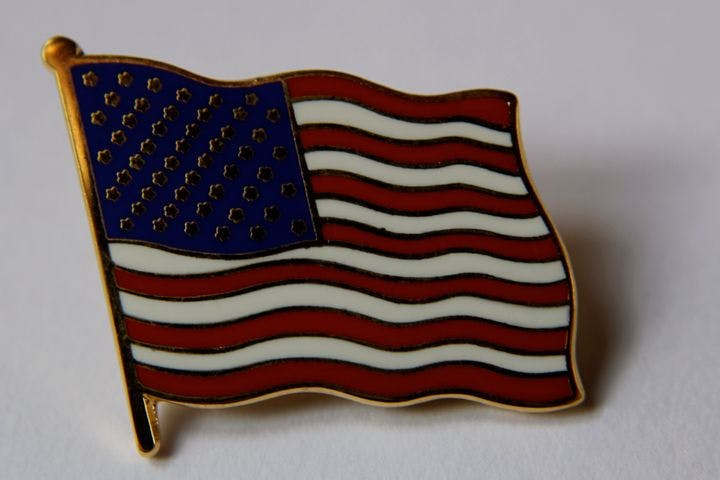Fall 2009
Three Flags
– The Wilson Quarterly
Where is the line between patriotism and idolatry when it comes to flag bearing?
For Lieutenant Colonel Cheryl Dietrich, a retired Air Force officer, the three flags she has owned carry more than just symbolic meaning. Her first flag—a 25-cent version she purchased at age 11 with the pooled resources of her two younger brothers and herself—adorned the “lending library” they had set up in their grandparents’ garage. A rambunctious brother fumbled, and Dietrich, watching in horror, saw that the “flag had touched the ground!” The only recourse for a flag so sullied was burning or burial, so the children dug a hole, recited the Pledge of Allegiance, and “solemnly shoveled dirt over the flag.”
That flag had the 13 stripes and 50 stars of the version in use since 1960, but Dietrich recalls the childhood shock of seeing the flag that in 1814 inspired Francis Scott Key’s “Star-Spangled Banner” at the Smithsonian, with its 15 stars and 15 stripes (which accommodated Vermont and Kentucky’s recent entry into the Union). Congress later fixed the number of stripes at 13, with the number of stars left to increase as new states arrived. “It is easy for us baby boomers and later generations to forget that the flag is designed to be a fluid, growing thing,” Dietrich writes. “Like the country.”
In the Air Force, Dietrich recounts, the flag was everywhere, so she didn't own one of her own. A basewide command required all personnel to come to attention if they were outdoors whenever “The Star-Spangled Banner” sounded over the speakers. One day, sweating over a flat tire, Dietrich, then a first lieutenant, thought she might get by with ignoring the rule. She was interrupted by the “pleasant but firm” voice of a lieutenant colonel: “‘Suppose we stop and pay our respects to the flag. Then I’ll help you with that.’ . . . When the last note ended, the officer dropped his salute, picked up the wrench, and replaced my tire without a word of rebuke.” None was needed.
Dietrich’s second flag, presented when she retired from the military after 20 years of service, had flown over the U.S. Capitol. By then there was not just flag burning but flag “idolatry,” or what she calls “domestic desecration”: the Stars and Stripes emblazoned on “T-shirts, jackets, bikinis, and thongs,” the flag as fashion, advertising, and personal expression. Dietrich, who opposes all laws against desecration, feels that “the flag is strong. It doesn't need our protection.” Still, the sight of such disrespect stirs the flag burner in her—the reverential 11-year-old who believed that every despoiled or abused ensign must be given a dignified end.
Seven years ago, when Dietrich and her husband moved into a house in Asheville, North Carolina, that had a flag holder on the deck, her husband suggested getting a flag. “What would the neighbors think?” Dietrich wondered. In the post–9/11 era, “was it possible anymore to fly a flag and have it mean merely that, no other messages involved?”
If you pass by Dietrich’s house today, you’ll likely find one there—her third—on sunny days and national holidays, on September 11 and on Flag Day, “if we remember it.” Dietrich and her husband “know the rules. We are careful and respectful of our flag. We don’t put it out in the rain. We bring it in at night. We never let it touch the ground.”
* * *
The Source: "Decoding the Flag" by Cheryl Dietrich, in The Gettysburg Review, Autumn 2009.
Photo courtesy of Flickr/Sarah-Rose
